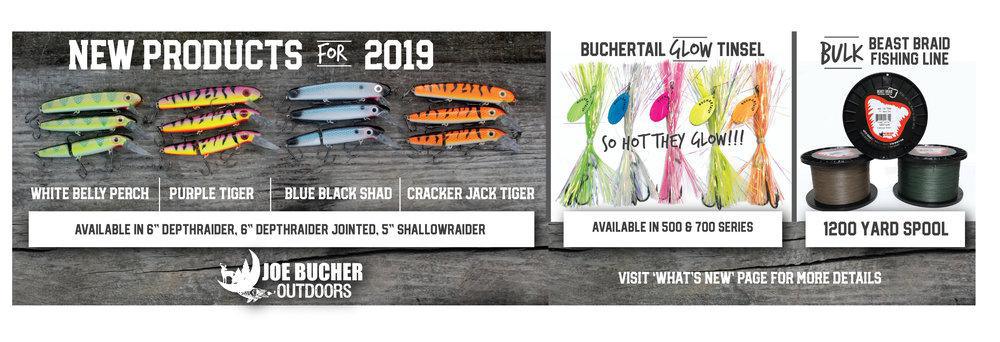As a fishing guide in northern Wisconsin I spend a lot of time teaching the art of fishing to folks of all skill levels, from first timers, to advanced muskie-nuts. A few years ago I stumbled across a little secret while instructing some beginning muskie anglers on the basics of casting, retrieving, and figure-eighting while using a baitcaster. I needed a lure that was super easy to fish, relatively lightweight and easy to cast but also simple to retrieve. Just cast it out and crank it in quickly. The answer was an oversized lipless crankbait, and the results began stacking up.
When to use lipless crankbaits for muskies?
Primetime for lipless crankbait fishing for muskies in the Midwest is the spring and early summer. Once the muskies have recovered from spawning, it is time to begin crankin’ your favorite spots. Water temperatures generally range from the high 40s into the low 60s once the season opens but I have found that lipless cranks are effective even as water temperatures approach 70 degrees.
Why to use lipless crankbaits for muskies?
Lipless crankbaits allow you to cover water quickly and efficiently and are especially good in shallow water areas. The teardrop design of the lure allows for lightning-fast retrieve speeds, which keep the lure high in the water column above any snags. You can also employ a “cruise-and-kill” retrieve for accessing deeper breaks or rock piles.
Early in the season the overall forage size is small. Newborn fish of all species become a part of the lake ecosystem and the lipless crankbait mimics these tiny critters with its smaller profile.
Where to use lipless crankbaits for muskies?
As a general rule of thumb when trying to find hungry muskies early in the season, look to the north and east sides of a lake where the sun’s rays spend the longest time warming the water and spurring photosynthesis and weed growth. Isolated bays adjacent to deeper water with dark muck bottoms, good weed growth and plenty of deadfalls are great places to begin your search, but don’t limit yourself to just weeds.
The “rock bite” for early-season muskies can be the real deal and hard-bottom structure is a place where the lipless cranks really shine. Shallow rock bars that top out in the 3- to 7-foot zone should be included in your milk run and don’t be surprised if a tanker smallmouth bass or walleye shows up, too.
How to use lipless crankbaits for muskies ?
The name speaks for itself: crankbait! All you have to do to fish a crankbait is simply crank it in and with muskies, finish every cast with a good figure-8. If you want to take your cranking game to the next level, here are a few techniques you should add to your arsenal.
Faster retrieves make the lure run higher in the water column while slower retrieves make the lure run deeper. Regardless of whether you are fishing rock or weed cover, keep your crankbait as close to the bottom as possible without getting snagged.
Find a retrieve speed that gets your lipless crank rattling as close to the weedy cover as possible and when you contact he cover, lift your rod quickly and give the crankbait a sharp rip forward. This sharp rip clears any weeds or debris that the treble hooks caught, plus the rip often triggers strikes. When fishing rocks and hard bottom areas, slow your retrieve speed down and let your crankbait “bounce along the bottom.”
Tackle and modifications
One of the neat things about lipless crankbait fishing for muskies is that almost any rod works well. Rods from 7 feet, 6 inches to 9 feet, with a medium-heavy power and fast action, are fantastic options. The ability to get your lipless crankbait moving quickly is important, so reels with a high gear ratio work best. Thicker diameter braided line makes your lipless crank run shallower while thinner diameter lines, in the 65-pound-test range, allow you to fish the lure a little deeper.
One last step when assessing your lipless crankbaits for “muskie-readiness” is the hook size. Many oversized lipless bass cranks are out there that will work very well for muskies, but the hooks that come standard on these lures are just too small. Replace these trebles with new ones in the 2/0 or 3/0 size, keeping in mind that the larger the hook, the deeper your lure will run.
If you’re looking for an easy way to step up your muskie game look no further than the lipless crankbait. Lipless crankbaits are designed for fishing over both weed and rock structure and the best part is, all you have to do is cast and crank. So snap one on and get ready to set the hook!
Chas Martin
Musky Guide www.MuskyMastery.com
Field Wtiter : Musky 360


